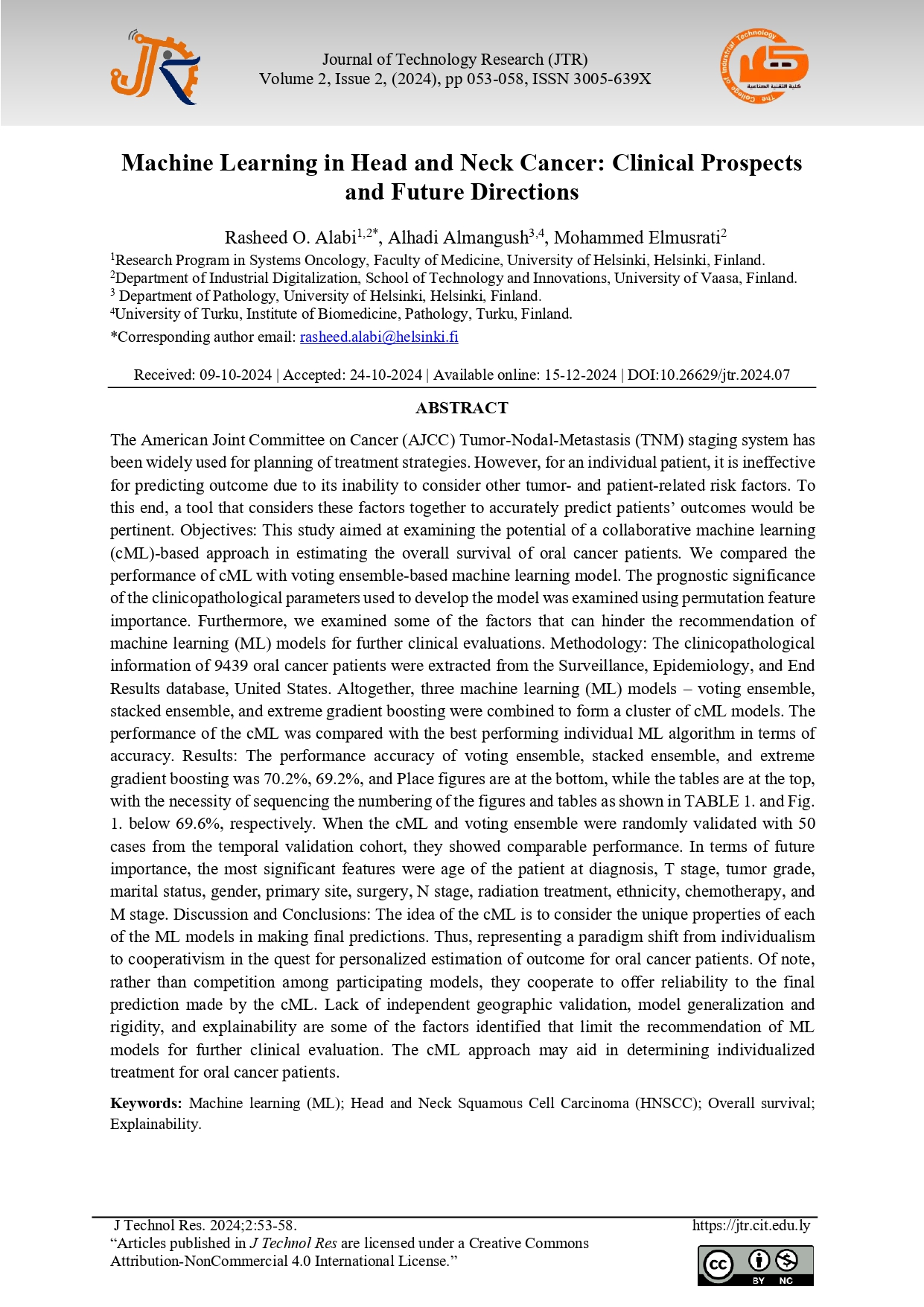Machine Learning in Head and Neck Cancer: Clinical Prospects and Future Directions
DOI:
https://doi.org/10.26629/jtr.2024.07Keywords:
Machine learning (ML), Head and Neck Squamous Cell Carcinoma (HNSCC), Overall survival, ExplainabilityAbstract
The American Joint Committee on Cancer (AJCC) Tumor-Nodal-Metastasis (TNM) staging system has been widely used for planning of treatment strategies. However, for an individual patient, it is ineffective for predicting outcome due to its inability to consider other tumor- and patient-related risk factors. To this end, a tool that considers these factors together to accurately predict patients’ outcomes would be pertinent. Objectives: This study aimed at examining the potential of a collaborative machine learning (cML)-based approach in estimating the overall survival of oral cancer patients. We compared the performance of cML with voting ensemble-based machine learning model. The prognostic significance of the clinicopathological parameters used to develop the model was examined using permutation feature importance. Furthermore, we examined some of the factors that can hinder the recommendation of machine learning (ML) models for further clinical evaluations. Methodology: The clinicopathological information of 9439 oral cancer patients were extracted from the Surveillance, Epidemiology, and End Results database, United States. Altogether, three machine learning (ML) models – voting ensemble, stacked ensemble, and extreme gradient boosting were combined to form a cluster of cML models. The performance of the cML was compared with the best performing individual ML algorithm in terms of accuracy. Results: The performance accuracy of voting ensemble, stacked ensemble, and extreme gradient boosting was 70.2%, 69.2%, and Place figures are at the bottom, while the tables are at the top, with the necessity of sequencing the numbering of the figures and tables as shown in TABLE 1. and Fig. 1. below 69.6%, respectively. When the cML and voting ensemble were randomly validated with 50 cases from the temporal validation cohort, they showed comparable performance. In terms of future importance, the most significant features were age of the patient at diagnosis, T stage, tumor grade, marital status, gender, primary site, surgery, N stage, radiation treatment, ethnicity, chemotherapy, and M stage. Discussion and Conclusions: The idea of the cML is to consider the unique properties of each of the ML models in making final predictions. Thus, representing a paradigm shift from individualism to cooperativism in the quest for personalized estimation of outcome for oral cancer patients. Of note, rather than competition among participating models, they cooperate to offer reliability to the final prediction made by the cML. Lack of independent geographic validation, model generalization and rigidity, and explainability are some of the factors identified that limit the recommendation of ML models for further clinical evaluation. The cML approach may aid in determining individualized treatment for oral cancer patients.
Downloads

Downloads
Published
Issue
Section
License

This work is licensed under a Creative Commons Attribution-NonCommercial 4.0 International License.














